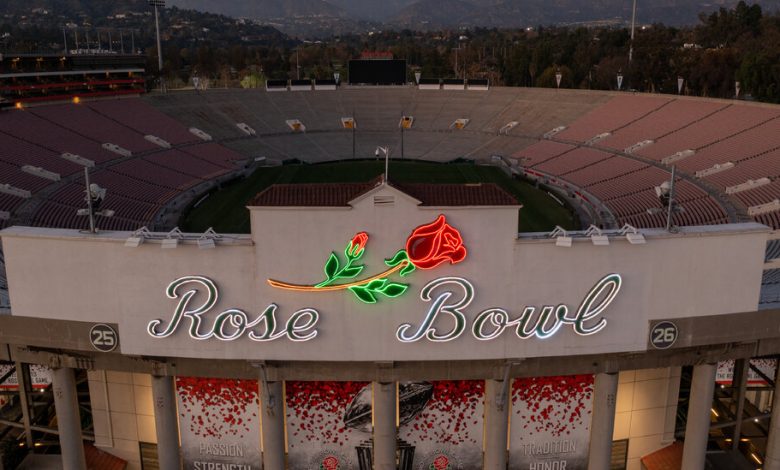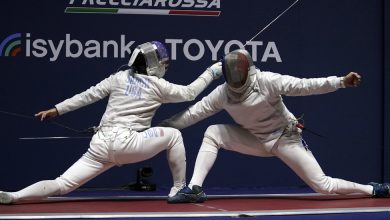At 100, the Rose Bowl Has Seen Many Sunsets

The modern-day sports stadium is something like an enormous outdoor (or indoor) living room. Roomy seats — even for those who can’t afford suites. Gourmet food. High-tech gadgetry. Video screens that are nearly the size of the field itself.
The Rose Bowl it isn’t.
This relic of a stadium, with its cramped seats, narrow tunnels, meh food and spotty connectivity speaks to just how old the Rose Bowl is — its 100-year birthday arrived in October. But what new stadiums have in modern conveniences, they rarely have in setting, often built where land is cheap and available — on parking lots, industrial plots or blighted neighborhoods.
As it does every New Year’s Day — or in cases like this year when the holiday lands on a Sunday — the Rose Bowl will take center stage on Monday, with the University of Utah and Penn State readying for the ritual 2 p.m. Pacific time kickoff, unencumbered by the rest of the bowl slate and unbothered by the rapidly evolving college football landscape that threatens the existence of the game known as “The Granddaddy of Them All.”
The path into the Arroyo Seco — the ravine just northwest of old town Pasadena — requires navigating a maze of residential streets filled with homes that are century-old architectural gems, until the bowl just appears, like a football castle in a forest clearing.

The Rose Bowl under construction.
Inside, the stadium is a canvas come to life. The grass is always the most lush green, and the end zones — painted the colors of the two teams — and the midfield rose are the most vibrant. In most years, as the sun sets late in the third quarter, the spectators — and the million homebound viewers shut in by a winter freeze — are treated (or taunted) by the sunlight dappling the San Gabriel Mountains hues of orange, pink and red.
The rest of the year the Rose Bowl is more than a college football centerpiece.
It has hosted four Super Bowls, World Cup finals for men and women, an Olympic soccer final, and concerts by Pink Floyd, U2 and Beyoncé. For the last 40 years, it has been home to U.C.L.A. football, and for longer than that a monthly Sunday flea market. Most days it is a fulcrum of the community — a place for joggers, bikers, swimmers and golfers.
Its future, though, is uncertain.
The expansion of the College Football Playoff means that this year’s game will be the last matching the Big Ten against the Pac-12 unless they’re pitted against each other through the vagaries of a playoff. The Rose Bowl game will be part of the playoff, but to do so it is giving up its prime New Year’s Day position.
The Rose Bowl will be a site for the 2028 Olympic soccer competition, but not for the World Cup in 2026, which will be hosted by Mexico, Canada and the United States. Instead, World Cup games will be about 20 miles south, at the glittering $4.9 billion SoFi Stadium, which will be the site of this season’s College Football Playoff championship game on Jan. 9.
The new stadium, built on a bulldozed racetrack and parking lot, is majestic in its own way and will build a history of its own over time. But will it ever match the pageantry and majesty of the ringing in the new year with the Rose Bowl?
Consider Troy Aikman, the Hall of Fame N.F.L. quarterback turned broadcaster. He starred at quarterback for U.C.L.A, and one of his crowning achievements was helping the Dallas Cowboys to a Super Bowl title at the Rose Bowl in a rout of the Buffalo Bills.
What gnaws at him, though, was losing back-to-back seasons to his college rival, Southern California, which prevented his U.C.L.A. teams from experiencing the spectacle of playing in the Rose Bowl on New Year’s Day.
“I think it’s the greatest venue for a big game for football anywhere in the country,” Aikman said recently of the Rose Bowl. “I got to play there for a Super Bowl, but my biggest regret is I never played in the actual Rose Bowl game. It’s the most beautiful setting there is. It’s a magical place.”




